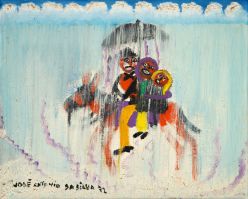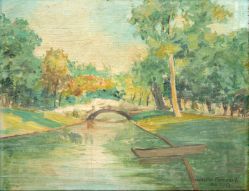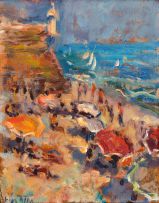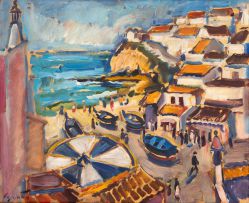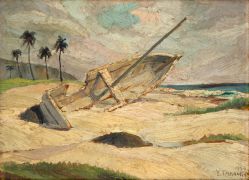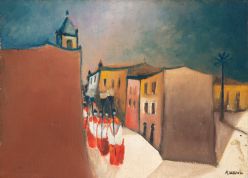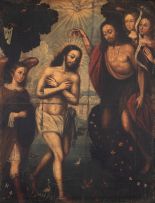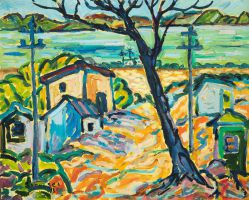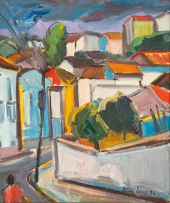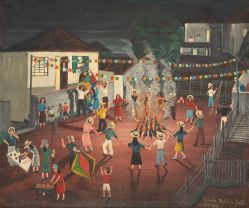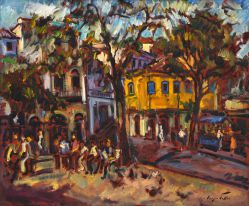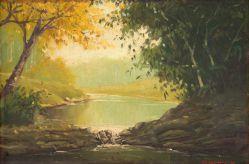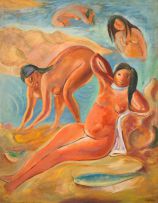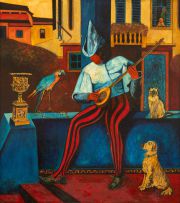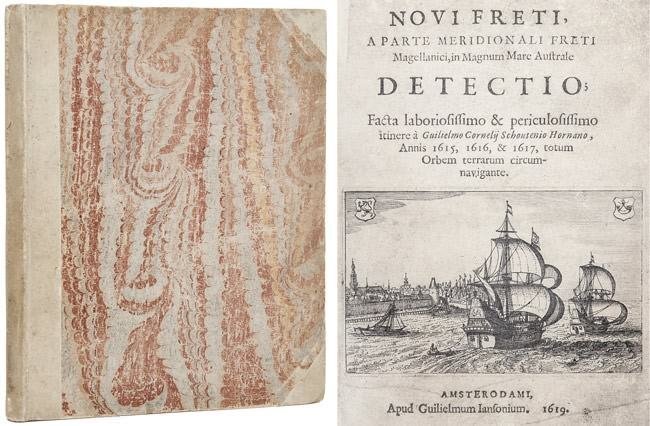
Lote
Livro
Willem Comeliszoon Shouten
Novi freti, a parte meridionali freti Magellanici, in magnum mare autrale australe detectio facta laboriosíssimo & periculosissimo itinere Guilielmo Cornely Schoutenio HormanobAnnis 1615,1616 & 1617 totum Orbem Terrarum circumnavigante - Amsterodami - Apud Guilielmun Iansonium - 1619 - Small quarto, with nine engraved folding maps and plates, some light staining and a blemish in a few upper margins but a very good copy in period style crushed morocco, spine gilt in compartments between raised bands. The first edition in French of this rare and important book, preceded only by the original Dutch versions of the same year (Amsterdam and Arnhem issues). Very many editions were to follow. This is the celebrated account of the Le Maire and Schouten expedition westward across the Pacific to the Indies, during which they discovered a new navigable passage south of Cape Horn. The maps, and particularly the well-known folding chart of a largely empty Pacific Ocean, demonstrate the magnitude of the achievement of Schouten and Le Maire in crossing the ocean from east to west, in order to reach the Spice islands without straying into the territories controlled by the monopolistic Dutch East India Company. Schouten and Le Maire named Cape Horn when they rounded it in 1616, visited several of the Tuamotus, and were the first westerners to visit the Tonga islands. They then coasted New Ireland and New Guinea on their way to the Spice Islands and eventually Batavia. The importance of the book to contemporary geographical understanding cannot be overstated; it was "the last seventeenth-century expedition to search for Terra Australis from the east" (Schilder). The voyage was made under the auspices of the newly formed group of Dutch traders known as the Australian Company, set-up to compete with the Dutch East India Company and to search for the elusive Terra Australis. It was of great importance for the future history of discovery in that it proved the existence of a passage from the southern Atlantic into the Pacific, south of the Straits of Magellan round Cape Horn, and therefore finally demonstrated that the supposed Southern Continent, contrary to the maps of Ortelius and Mercator, did not extend to the Straits of Magellan. Although this account presents itself as Schouten‘s journal of the voyage, as Schilder points out "the facts were misrepresented. It appeared from it that all the discoveries of the expedition owed their origin to Schouten and that he had a financial share in the expedition amounting to half the capital". A later edition of the voyage published in 1622 revealed that Schouten had overstated his importance, and this supposedly authentic account of the voyage was mostly lifted from the ship‘s log kept by Jacob Le Maire.This edition, produced in Amsterdam by the publisher and cartographer Willem Blaeu, is one of two variant French-language issues of 1618 noted by the bibliographer Tiele (no priority has been assigned). Within a few years the account was frequently reprinted, indeed Tiele identifies as many as 38 early editions of the Schouten narrative printed in the Netherlands alone (Latin, Spanish and English editions appeared soon afterwards). Another French-language edition was printed in Paris later in the same year. Not in Landwehr, "VOC"; Tiele , 984; Tiele-Muller, 37.Obs. Um dos primeiros relatos de circum-navegação ao globo no século XVII, encadernação século XIX e pequenos restauros completo. "Willem Cornelisz Schouten was born in c. 1567 in Hoorn, Holland, Seventeen Provinces. In 1615 Willem Cornelisz Schouten and Jacob le Maire sailed from Texel in the Netherlands, in command of an expedition sponsored by Isaac Le Maire and his Australische Compagnie in equal shares with Schouten. A main purpose of the voyage was to search for Terra Australis, which eluded them. A further objective was to evade the trade restrictions of the Dutch East India Company (VOC) by finding a new route to the Pacific and the Spice Islands. In 1616 Schouten rounded Cape Horn, which he named for his birthplace, the Dutch city of Ho
Veja também

Novidades do Leilão de Arte!
Seja o primeiro a receber a agenda dos próximos leilões, exposições e novidades de acervo.
Ao assinar, você concorda com a nossa política de privacidade.

